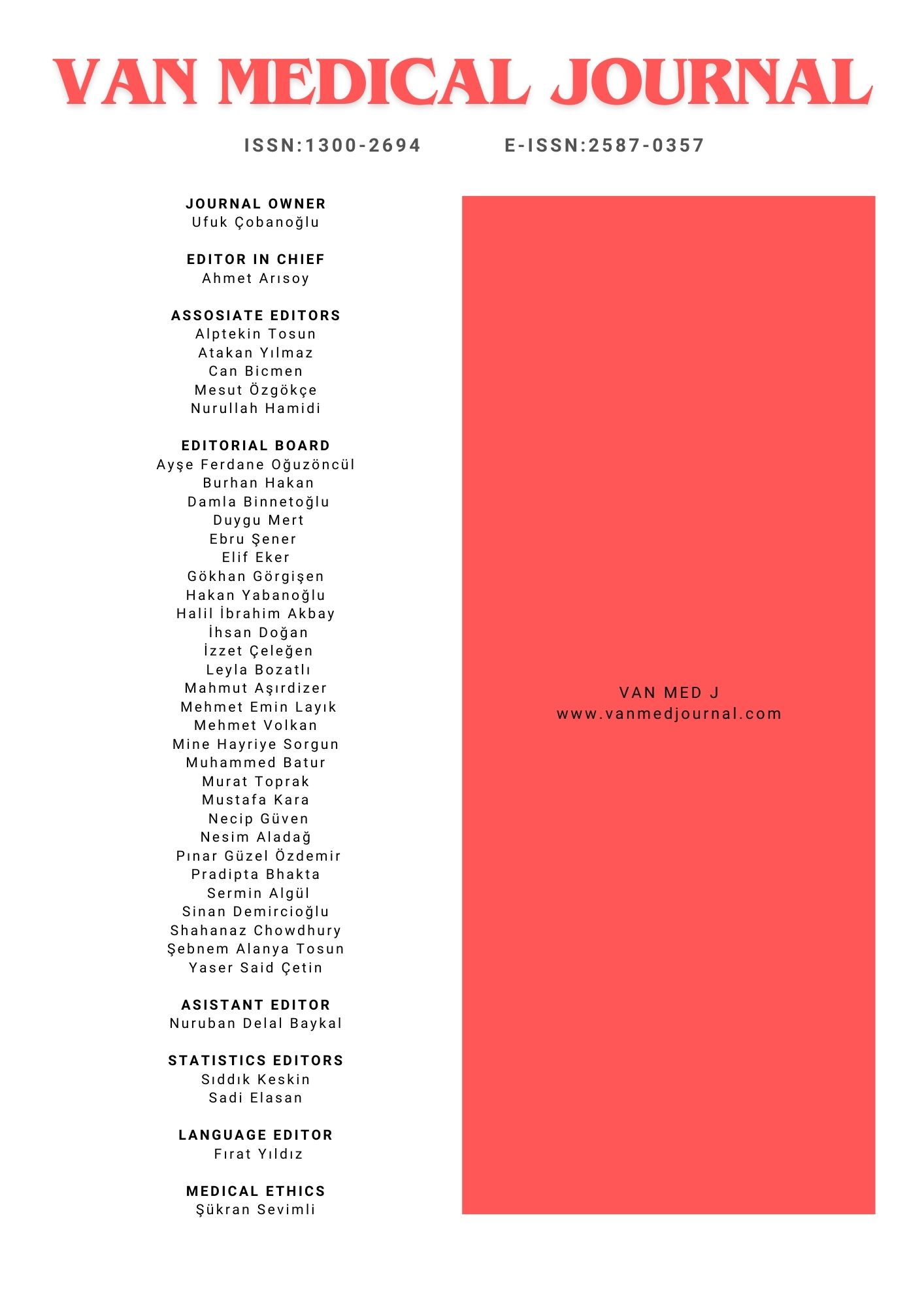Retrospective evaluation of hospitalizations in our intensive care units resulting in death in one year period
Enes Bülbül1, Gülten Arslan2, Banu Eler Çevik21Department of Anestesiology and Reanimation, Sultanbeyli State Hospital. Istanbul2Department of Anestesiology and Reanimation, University of Health Science Kartal Dr. Lütfi Kırdar Training And Research Hospital, İstanbul, Turkey
INTRODUCTION: The aim of this study is to investigate the demographic characteristics, mortality reasons and the factors that affect the mortality of the patients in general intensive care units.
METHODS: In this study, 510 patients who were followed-up in our Intensive Care Units for one year and died were grouped according to age groups as Age≤18, 18<Age≤35, 35<Age≤50, 50<Age≤65, 65<Age≤80 and 80<Age.We evaluated age, gender, comorbidities, causes of admission to the intensive care and death, duration of hospitalization and mechanical ventilation, unit of arrival, feeding type, inotropic, re-intubation and tracheostomy requirements, history of CPR, APACHE-II and first 24 hours-GCS scores, presence of brain death and organ donor.
RESULTS: The group with the most patients was 65<Age≤80 and this group had the most hospitalization and mechanical ventilation duration.Most of the cases who were mortal were male and the most common cause for admission to the intensive care unit and death was the malignancy.It was determined that most of the patients were admitted to the intensive care unit from the emergency and intubated and the most common history of CPR was in the emergency patients.The lowest APACHE-II score was found in the postoperative follow-up-elective group and the highest score was found in the trauma group according to admission reasons.
DISCUSSION AND CONCLUSION: In our intensive care units where there are limited and inadequate number of beds, we think that the regulation of new approach protocols, re-determination of patient acceptance criteria, establishment of new units for end-stage care and oncologic patients may be useful in reducing mortality.
Yoğun bakım ünitelerimizde bir yıllık süreçte ölüm ile sonuçlanan hasta yatışlarının retrospektif değerlendirilmesi
Enes Bülbül1, Gülten Arslan2, Banu Eler Çevik21Sultanbeyli Devlet Hastanesi, Anesteziyoloji ve Reanimasyon Kliniği, İstanbul2Sağlık Bilimleri Üniversitesi Kartal Dr Lütfi Kırdar Eğitim Ve Araştırma Hastanesi, Anesteziyoloji ve Reanimasyon Kliniği, İstanbul
GİRİŞ ve AMAÇ: Bu çalışmanın amacı; genel yoğun bakım ünitelerine alınan ve ölümle sonuçlanan hastaların demografik özelliklerini, mortalite nedenlerini ve buna etki eden faktörleri araştırmaktır.
YÖNTEM ve GEREÇLER: Bu çalışmada retrospektif olarak Yoğun Bakım Ünitelerimizde 1 yıllık süreçte takip edilen ve ölümle sonuçlanan 510 hasta yaş gruplarına göre Yaş≤18, 18<Yaş≤35, 35<Yaş≤50, 50<Yaş≤65, 65<Yaş≤80 ve 80<Yaş olacak şekilde gruplandırıldı. Yaş, cinsiyet, ek hastalıkları, yoğun bakım ünitesine kabul ediliş ve ölüm nedenleri, yatış ve mekanik ventilasyon süreleri, geldikleri birim, beslenme türü, inotropik, re-entübasyon ve trakeostomi gereksinimleri, post-CPR varlığı, APACHE II ve ilk 24 saat GKS skorları, beyin ölümü ve organ donörü varlığı değerlendirilerek kaydedildi.
BULGULAR: Mortalitenin en fazla gözlendiği 65<Yaş≤80 yaş grubu yoğun bakım ünitesinde en fazla yatış ve mekanik ventilasyon süresine de sahip idi. Mortal olan olguların çoğunluğunun erkek, en sık kabul ve ölüm nedeninin de malignite olduğu gözlendi. Hastaların büyük kısmının acilden ve entübe olarak yoğun bakım ünitesine kabul edildiği, en fazla CPR anamnezinin acil hastalarda olduğu belirlendi. Kabul nedenlerine göre en düşük APACHE-II skoru postoperatif Takip-Elektif grubunda, en yüksek skor ise travma grubunda tespit edildi.
TARTIŞMA ve SONUÇ: Kısıtlı ve yetersiz sayıda yatakların bulunduğu yoğun bakım ünitelerimizde hastalara yeni yaklaşım protokellerinin düzenlenmesinin, hasta kabul kriterlerinin yeniden belirlenmesinin, son dönem bakım ve onkolojik hastalar için yeni ünitelerin oluşturulmasının mortaliteyi azaltmada faydalı olabileceği kanısındayız.
Manuscript Language: Turkish

